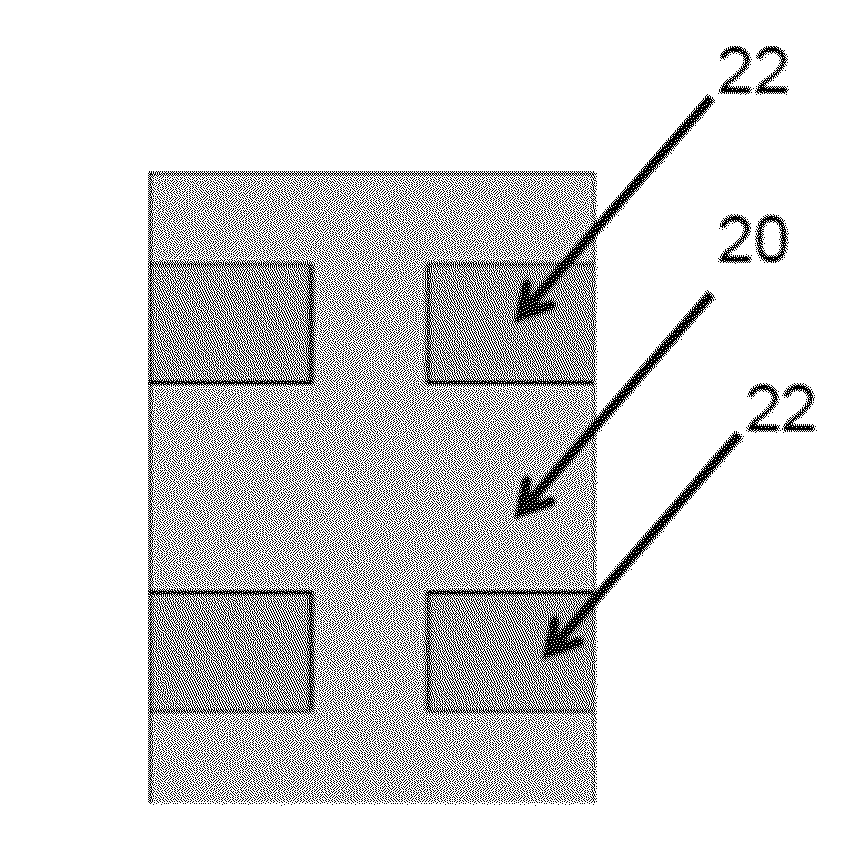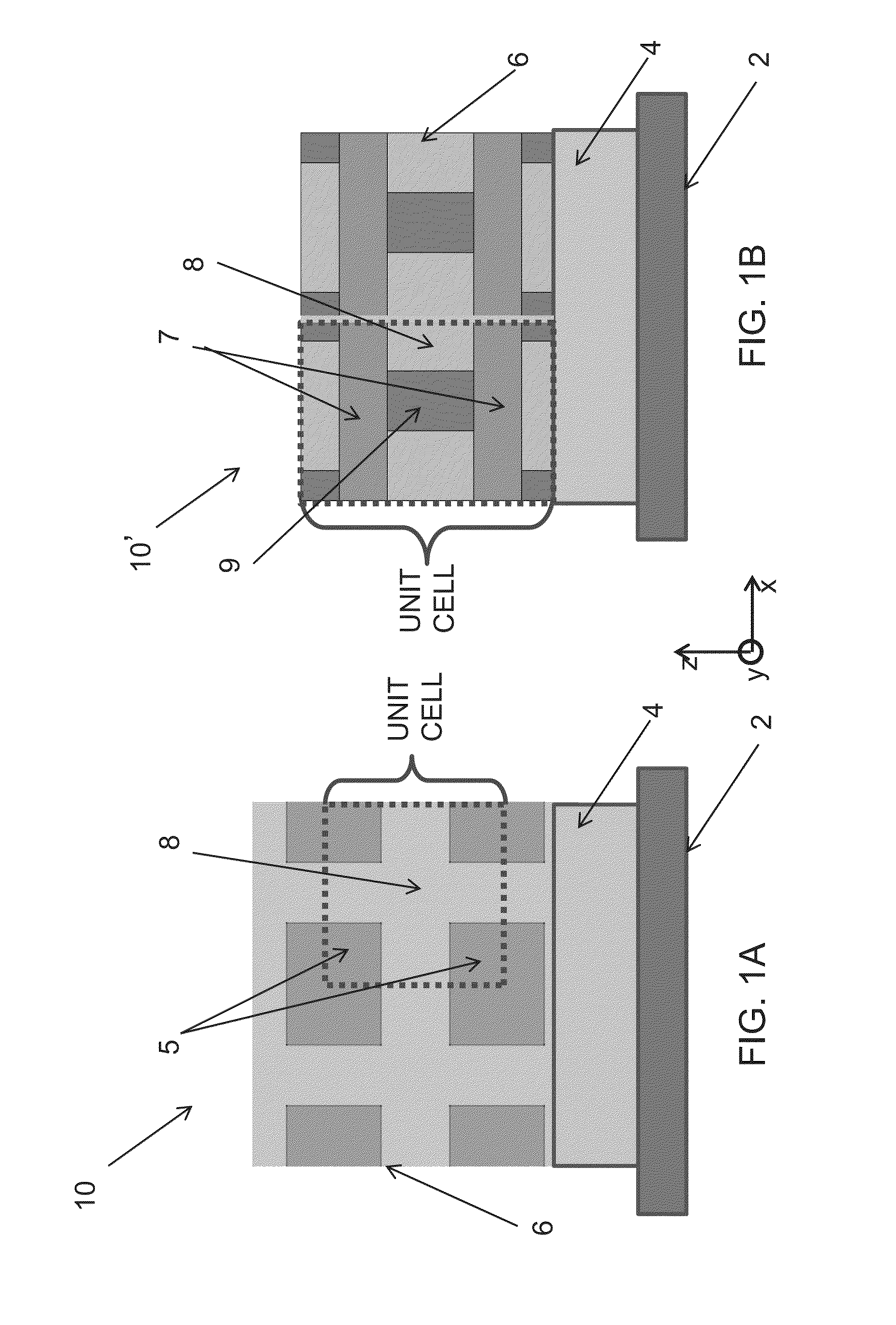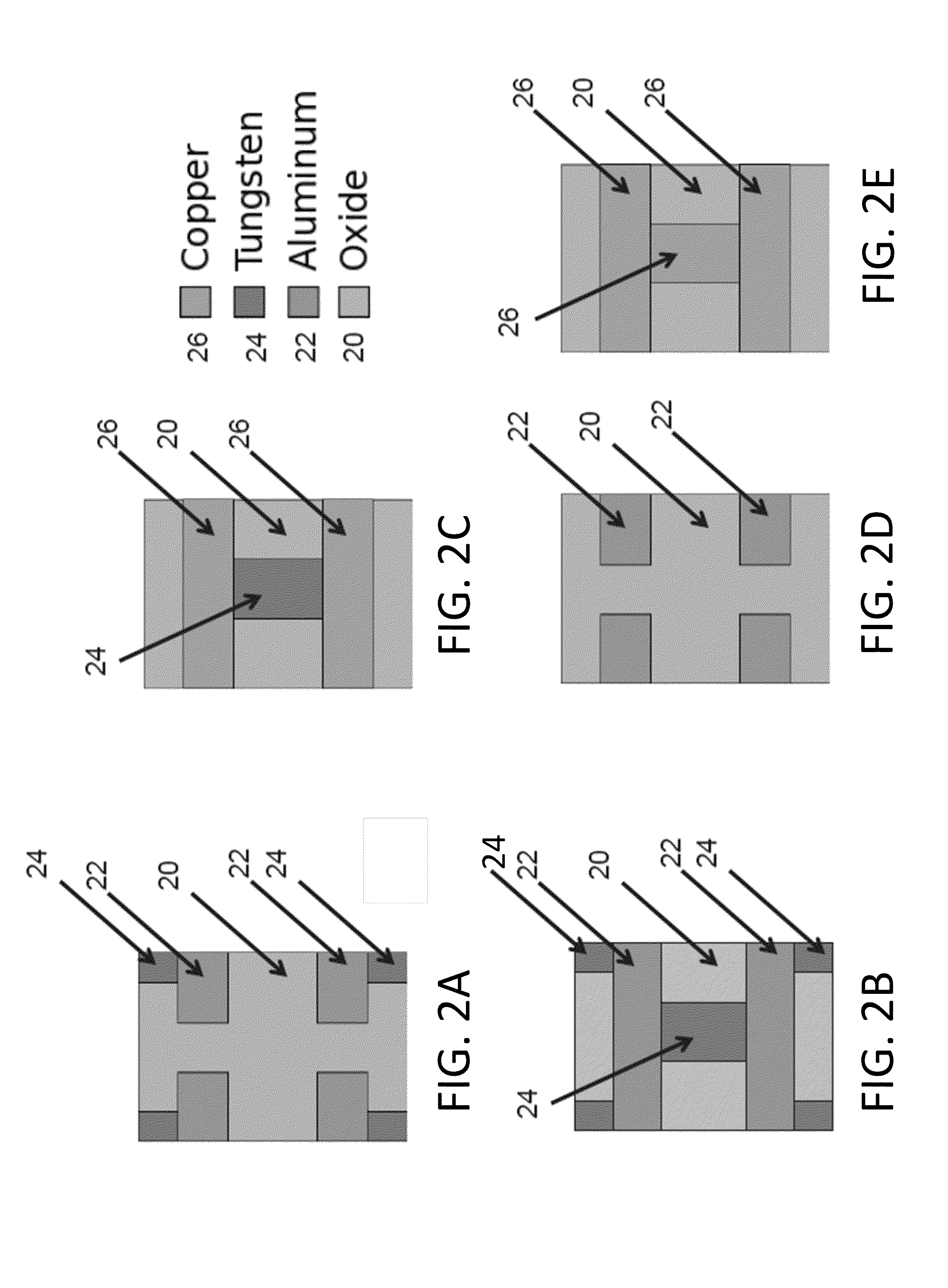Acoustic bandgap structures for integration of MEMS resonators
a technology of acoustic bandgap and resonator, which is applied in the direction of transducer details, electrical transducers, electrical apparatus, etc., can solve the problems of increasing spurious modes, increasing anchor loss, and reducing quality factors, so as to reduce parasitics, reduce size and weight, and high frequency operation
- Summary
- Abstract
- Description
- Claims
- Application Information
AI Technical Summary
Benefits of technology
Problems solved by technology
Method used
Image
Examples
Embodiment Construction
[0052]Following below are more detailed descriptions of various concepts related to, and embodiments of, inventive systems, methods and apparatus for providing integrated unreleased MEMS resonators based on acoustic bandgap structures. It should be appreciated that various concepts introduced above and described in greater detail below may be implemented in any of numerous ways, as the disclosed concepts are not limited to any particular manner of implementation. Examples of specific implementations and applications are provided primarily for illustrative purposes.
[0053]As used herein, the term “includes” means includes but is not limited to, the term “including” means including but not limited to. The term “based on” means based at least in part on.
[0054]With respect to substrates or other surfaces described herein in connection with various examples of the principles herein, any references to “top” surface and “bottom” surface are used primarily to indicate relative position, alig...
PUM
 Login to View More
Login to View More Abstract
Description
Claims
Application Information
 Login to View More
Login to View More - R&D
- Intellectual Property
- Life Sciences
- Materials
- Tech Scout
- Unparalleled Data Quality
- Higher Quality Content
- 60% Fewer Hallucinations
Browse by: Latest US Patents, China's latest patents, Technical Efficacy Thesaurus, Application Domain, Technology Topic, Popular Technical Reports.
© 2025 PatSnap. All rights reserved.Legal|Privacy policy|Modern Slavery Act Transparency Statement|Sitemap|About US| Contact US: help@patsnap.com



